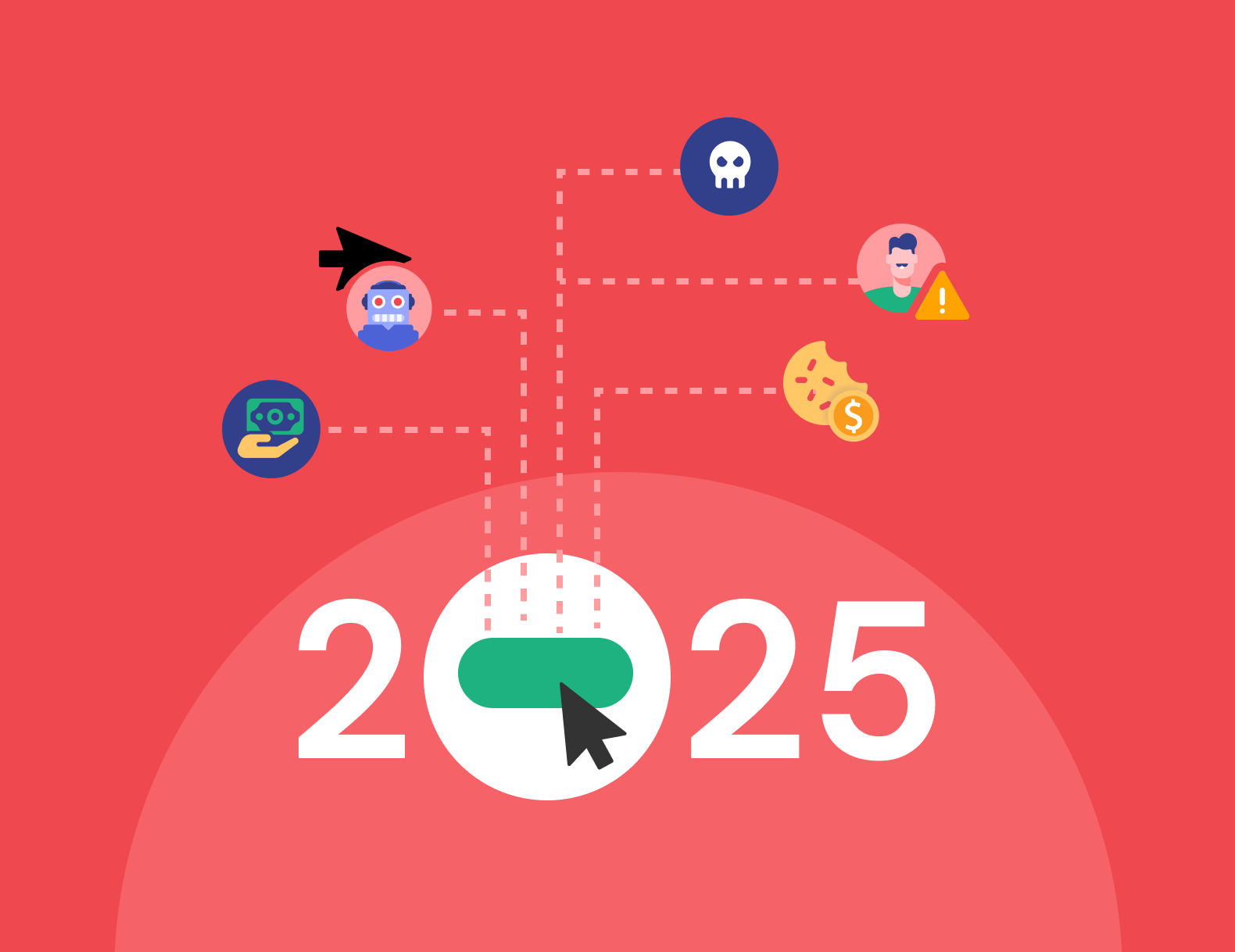How Fraud Traffic is Draining Your Digital Ad Budget: Recognising the Signs

Digital advertising doesn’t come cheap. And yet, a chunk of your budget might be wasted on traffic that never had any chance of converting. If you’re not actively filtering out invalid activity, you’re likely paying for clicks that offer zero return. This isn’t a minor glitch in your campaign, it’s a persistent drain on ROI, optimisation efforts, and performance clarity.
In this blog, we break down exactly how fraud traffic eats away at your ad budget, the warning signs to look out for, and the steps you can take to stop it.
What is invalid traffic traffic?
Invalid traffic includes clicks, impressions, or conversions that don’t come from genuine prospects. This can include bots, fraudulent actors, or even existing customers who’ve already converted—driving up costs without adding value. They inflate your metrics and burn your budget.
Not all invalid traffic is malicious. Returning users, for instance, might repeatedly click your Google ad just to revisit your site or log in especially on low-margin products. These clicks cost you the same as a new lead, but deliver no incremental value.
Whether intentional or not, fraud traffic undermines your campaign's performance and profitability.
🎯 Curious how much invalid traffic is draining your budget right now? Use our IVT Calculator to find out in seconds
The impact of invalid traffic in digital advertising
1. Wasted clicks and impressions
Every invalid click you pay for is a missed opportunity to reach a real prospect. Bot traffic racks up impressions and clicks with no chance of converting, quietly draining your budget while masking poor performance under inflated engagement.
2. Distorted metrics and poor optimisation
Fraud traffic corrupts your campaign data. Your CTR might look high, but if conversions don’t follow, your cost per acquisition spirals. This makes it harder to optimise, retarget, or scale based on reliable insights. You’re not just wasting money, you’re flying blind.
3. Hidden cost on ROI and budget planning
Click fraud skews your understanding of what’s working. It forces you to spend more just to maintain baseline performance and distorts your forecast models. Without clear visibility into what’s real, your media planning and budget allocation suffer. Want to dive deeper into the signs and strategies? Read our blog: Fix the Signal, Not Just the Spend: Click Fraud Prevention Starts with Better Traffic
Recognising the red flags of invalid traffic in your campaigns
Spotting click fraud isn’t always straightforward, but the signs are there if you know where to look.
1. High CTR, low conversion
If your ads are getting clicked but aren’t driving conversions, it’s time to investigate. A disconnect between CTR and results is a classic sign of invalid traffic inflating engagement.
2. Irrelevant or unusual traffic sources
Clicks coming from locations outside your target market or IP addresses you’ve never seen before often point to automated bots or click farms operating across regions.
3. Short visit duration and bounce spikes
If visitors are leaving almost immediately after landing, they’re likely not real users. High bounce rates combined with low session duration can signal bot activity or accidental clicks.
4. Traffic spikes at unusual times
A sudden surge in traffic at 3am? Unless your audience is truly global and nocturnal, abnormal traffic patterns may be caused by automated scripts, not prospects.
5. Data discrepancies between ad platforms and analytics
If Google Ads shows strong engagement but your analytics platform paints a different picture such as low page depth, high bounce, or minimal conversion, click fraud is likely distorting your results.
See it in action:
One global sports betting operator discovered this exact problem when ad platform data didn't match performance outcomes. After using TrafficGuard, they uncovered a surge in bot activity, improved attribution accuracy, and saw a dramatic uplift in campaign efficiency.
Taking action to combat invalid traffic
Why manual checks aren’t enough
Monitoring IPs, reviewing analytics, and building exclusion lists manually is not scalable. By the time you identify a pattern, the damage is already done. Fraud tactics evolve quickly and without automation, you’re always reacting, never preventing.
To stop budget bleed, you need click fraud prevention software that works in real time. TrafficGuard’s machine learning models detect subtle patterns in real time, blocking invalid clicks before they impact your campaigns.
How TrafficGuard helps you eliminate fraud traffic
1. Automatic blocking of invalid clicks
TrafficGuard stops your ads from being served to sources of invalid traffic before they can burn your budget. Our click fraud protection uses behavioural and network signals to identify non-genuine engagement and block it automatically.
2. Click frequency rules to prevent repetitive abuse
Some users click on your ad every time they want to return to your site even after converting. Our click frequency rules limit how often the same user can click your ad, reducing wasted spend on non-incremental engagement.
3. Custom verification rules and shadow campaigns
TrafficGuard allows you to set rules that filter out suspicious clicks and push them into shadow campaigns. This means genuine users still see your ads but risky behaviour doesn’t eat into your budget.
4. Lowering CAC while maintaining visibility
By filtering out unproductive clicks, you get more value from every dollar spent. That means lower customer acquisition costs and better visibility in search results without compromising on reach.
Conclusion
Fraud and invalid traffic aren’t just nuisances, they quietly drain your digital advertising performance and budge It skews your data, eats into your budget, and prevents you from scaling efficiently.
By understanding the red flags and using a platform like TrafficGuard to implement proactive click fraud prevention, you can take back control. Cleaner traffic means clearer insights, stronger optimisation, and better ROI from your campaigns.
FAQ & Key Takeaways
- What is fraud traffic and why does it matter?
Fraud traffic includes clicks and impressions from bots, fake users, or returning visitors who don’t provide incremental value. These interactions waste your budget and distort your campaign data. - How can I recognise click fraud in my campaigns?
Look for high CTR with low conversion, traffic from unfamiliar sources, odd timing patterns, or major differences between ad platform data and your analytics tools. - How does TrafficGuard prevent click fraud?
TrafficGuard uses real-time click fraud prevention powered by machine learning to detect and block invalid traffic before it drains your budget. Our system analyses behavioural and network patterns to flag suspicious activity instantly. no manual exclusions, no delays. With features like click frequency rules and shadow campaigns, we isolate repeat abusers and non-genuine engagement to protect your performance and boost ROI.
Get started - it's free
You can set up a TrafficGuard account in minutes, so we’ll be protecting your campaigns before you can say ‘sky-high ROI’.
Subscribe
Subscribe now to get all the latest news and insights on digital advertising, machine learning and ad fraud.








